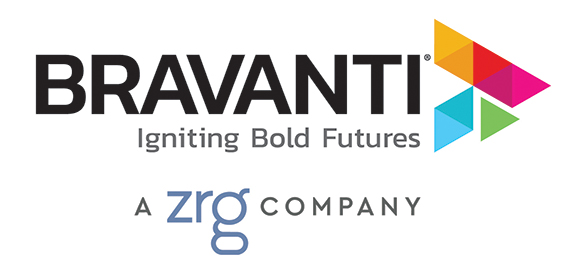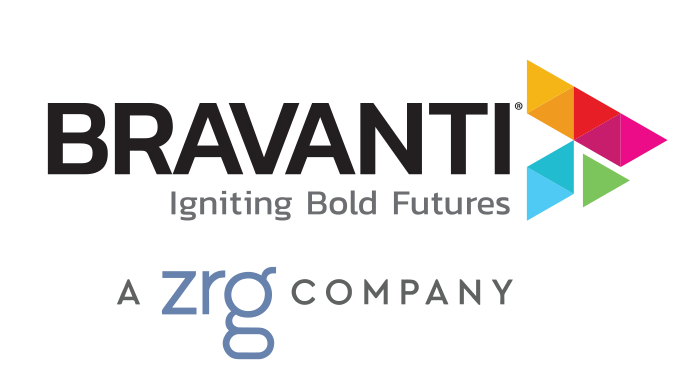Considerations, Best Practices & Strategies
By Bravanti
The complexity of workforce planning in today’s business landscape cannot be overstated. From rapid technological advancements to changing economic headwinds, the adaptability and resilience of modern businesses are constantly being tested.
As a leading provider of leadership development, executive coaching, internal mobility, and outplacement services, we have a deep understanding of the modern workforce’s intricacies. Across all industries, regions, and organizational structures, one crucial aspect that remains paramount amidst all uncertainties is the need for strategic workforce planning.
What is Workforce Planning?
Workforce planning is the art and science of ensuring an organization has the right talent in place at the opportune moment. It’s a bridge connecting overarching organizational strategy and the nuances of talent management. Here’s a closer look at its profound importance:
- Business Continuity: With a solid workforce plan, businesses can maintain operations even when external challenges arise. This resilience is vital in an era where disruptions are frequent and often unforeseeable.
- Talent Optimization: Proper planning ensures organizations not only attract and retain the brightest minds but also foster their growth in line with business trajectories.
- Cost Management: By preemptively identifying talent gaps and preparing for them, companies can sidestep the substantial costs associated with panic hiring or, conversely, redundancies.
- Future-proofing: In a rapidly evolving business environment, organizations need foresight. Workforce planning provides the insights and adaptability necessary to prepare for and harness future challenges.
Core Considerations in Modern Workforce Planning
Several factors are reshaping the world of work, and understanding them is key to effective workforce planning:
- Internal vs. External Talent Pools: While grooming internal talent is vital, there’s also a need to remain open to external expertise. Balancing both sources is crucial for a well-rounded talent strategy.
- Technological Disruption: Beyond being a tool, technology is redefining job roles and organizational structures. Recognizing and preparing for these shifts is vital.
- Diversity & Inclusion: In today’s global marketplace, diverse teams bring a wealth of perspectives that foster innovation and better reflect our interconnected world.
- Regulatory Landscapes: Global businesses must navigate a maze of local employment regulations, labor rights, and shifting geopolitical dynamics.
Workforce Planning Best Practices
The following practices have proven essential in crafting effective, forward-thinking workforce plans:
- Scenario Planning: By preparing for various futures, organizations can ensure they’re never caught entirely off guard, allowing for more agile responses to change.
- Continuous Review & Evolution: The workforce planning of previous years was often static and incompatible with dynamic business environments. Today’s best practices demand regular reviews, updates, and course corrections.
- Engage Multiple Stakeholders: The more voices and perspectives included in planning, the more holistic and effective the resulting strategies will be.
- Data at the Helm: Modern workforce planning leverages vast amounts of data, turning these insights into actionable strategies and predictions.
Strategies for Effective Workforce Planning
In addition to the aforementioned considerations and best practices, incorporating proven strategies into workforce planning is essential to navigating today’s intricate business landscape. Such strategies ensure that your organization has the right talent in place to meet current and future business objectives, while remaining agile enough to adapt to unforeseen challenges.
The following strategies can provide a competitive edge that enables you to maximize productivity, reduce costs, and seize emerging opportunities with a prepared and skilled workforce.
Holistic Talent Perspectives
Effective workforce planning delves deep into every role, understanding its broader impact and aligning it with strategic business objectives. By adopting a holistic talent perspective, you can ensure that each team member contributes optimally, synergizing with the company’s bigger vision. Holistic perspectives also allow you to identify potential talent roadblocks and opportunities, facilitating proactive decision-making. Ultimately, understanding each role’s intricacies and its place in the larger organizational puzzle enhances productivity and streamlines growth.
Tips for incorporating this strategy into your workforce planning:
- Map Out the Organizational Structure: Clearly define roles, responsibilities, and interdepartmental relationships to understand the overall function of each position.
- Conduct Talent Audits: Regularly review and assess the skills, strengths, and areas of improvement for each team member to align with the company’s objectives.
- Develop Role Evolution Plans: Anticipate how roles might evolve and prepare for necessary upskilling or cross-training.
- Prioritize DE&I: Countless studies show the positive impact of diverse, equitable, and inclusive cultures on individual and organizational performance. Identify your DE&I objectives and ensure that they are accounted for in your talent strategies.
- Engage in Regular Feedback Loops: Establish ongoing communication channels with employees to gain insights into potential improvements and challenges.
Building In Flexibility
Flexible workforce strategies enable businesses to scale up or down rapidly to meet fluctuating market demands. This can look like flexible roles, varied contract types, remote working options, and more, collectively ensuring that your organization can adapt as situations change. This dynamic approach not only improves operational efficiency but also enhances employee satisfaction, catering to their diverse needs and lifestyles. Flexibility acts as your organization’s buffer against external shocks.
Tips for incorporating this strategy into your workforce planning:
- Offer Varied Contract Types: Integrate part-time, freelance, and contract roles into the workforce to cater to different needs.
- Implement Remote Work Policies: Create a robust framework for remote work, ensuring that productivity and communication standards are maintained.
- Encourage Cross-Training: Equip employees with skills that extend beyond their primary role to allow for role flexibility.
- Establish Rapid Response Protocols: Develop processes to realign workforce resources swiftly in response to sudden market changes.
Championing Internal Mobility
By facilitating internal role changes and skill development, your organization can swiftly realign talent in response to evolving needs. Encouraging internal mobility fosters a culture of continuous learning and adaptability by allowing employees, to gain multi-faceted experiences within the organization that contribute to their professional growth and impact. Furthermore, this mobility reduces turnover, as employees find new challenges and opportunities within the same organizational umbrella.
Tips for incorporating this strategy into your workforce planning:
- Create Transparent Career Pathways: Ensure that employees are aware of potential growth and movement opportunities within the organization.
- Implement Internal Job Boards: Facilitate the visibility of open roles within the organization to current employees.
- Host Skills Development Workshops: Offer training sessions that allow employees to acquire new competencies and diversify their skillsets.
- Celebrate Internal Successes: Recognize and reward employees who excel in new roles or take on new challenges.
Prioritizing Leadership Development
Strong leaders are the bedrock upon which resilient organizations are built. While prioritizing leadership development provides immediate benefit in the form of adaptive, informed, and strategic thinkers in leadership roles, it also serves to identify and nurture high-potential leaders within the ranks. Given that robust leadership pipelines are essential for succession planning, ensuring business continuity, and achieving organizational goals, prioritizing leadership development is a must-do, especially in an uncertain world.
Tips for incorporating this strategy into your workforce planning:
- Invest in Leadership Programs: Offer executive coaching, mentorship programs, and leadership courses to refine leadership skills.
- Establish a Succession Plan: Identify potential leaders early and provide them with tailored growth opportunities.
- Promote Peer-to-Peer Learning: Encourage seasoned leaders to share their experiences and insights with emerging leaders.
- Regularly Evaluate Leadership Effectiveness: Use feedback and performance metrics to assess and improve leadership strategies.
Outplacement Contingency Planning
Unfortunately, there may be times when workforce reductions are unavoidable, but how these reductions are conducted can be instrumental in long-term organizational success. In these scenarios, outplacement services are a strategic tool to manage talent transitions while preserving brand reputation. Providing transitioning employees with the resources and support to find new opportunities demonstrates a company’s commitment to its workforce’s well-being. This approach not only aids in maintaining a positive company image but also reassures remaining employees about the organization’s values. Ultimately, outplacement strategies reflect a company’s dedication to ethical practices, even during challenging times.
Tips for incorporating this strategy into your workforce planning:
- Provide Comprehensive Support: Offer career coaching, resume workshops, and interview coaching to transitioning employees.
- Maintain Transparent Communication: Ensure open dialogues with employees about organizational changes and the resources available to them. Check out this helpful guide to communicating change.
- Partner with Job Placement Agencies: Collaborate with agencies to facilitate smoother transitions for affected employees.
- Monitor Alumni Success: Track the progress of former employees to refine and improve outplacement services.
Harnessing Talent Analytics
Modern tools and platforms provide granular insights into workforce dynamics, from predicting turnover risks to spotting emergent skill gaps. By leveraging these insights, your company can proactively address potential talent challenges before they escalate. Predictive analytics can help tailor recruitment campaigns, refine employee retention strategies, and design personalized employee development plans. In essence, data-driven talent decisions empower your organization to be several steps ahead, optimizing your talent strategies in real-time.
Tips for incorporating this strategy into your workforce planning:
- Adopt Advanced Analytic Tools: Invest in platforms that provide real-time insights into talent metrics and trends.
- Regularly Review Turnover Data: Analyze attrition rates to identify patterns and address potential concerns.
- Tailor Recruitment Strategies: Use data insights to refine job advertisements, targeting, and candidate sourcing methods.
- Encourage Feedback Mechanisms: Use surveys and feedback tools to gain insights directly from the workforce.
Collaborative Ecosystems
By creating strong ties with industry consultants, academic institutions, trade associations, and other partners, your organization can widen its talent pool and stay abreast of industry evolutions. Collaborative ecosystems act as a conduit for fresh ideas, innovative solutions, and diverse talent. Engaging with external entities also provides a window into emerging industry trends, allowing you to prepare and adapt in advance. In an interconnected business world, these collaborations offer a competitive edge, ensuring a continuous influx of fresh perspectives and expertise.
Tips for incorporating this strategy into your workforce planning:
- Find the Right Partners: Proactively engage talent management partners who can inform and guide your talent strategies.
- Join Industry Associations: Engage actively in industry groups to stay updated on trends and best practices.
- Host Collaborative Events: Organize workshops, hackathons, or conferences with partners to foster innovation.
- Promote Knowledge Exchange: Create platforms or forums where external collaborators can share insights, research, and innovations with your organization.
Navigating Uncertainty with Confidence
It’s a truth universally acknowledged in the business world that preparation is the best defense against uncertainty. As such, strategic workforce planning has emerged as a critical tool for modern organizations, offering the insights and adaptability required to harness the challenges of our ever-changing business climate.
For Fortune 1000 entities, the complexities are manifold. Engaging with experienced partners in leadership development, internal mobility, and outplacement can offer the nuanced guidance and support essential in today’s business ecosystem. As your trusted ally, our commitment is to ensure you not only navigate these complexities, but that you move boldly forward, igniting bold futures for your people and organization.
Interested to learn more about how Bravanti can help you build bolder, brighter futures? Connect with us today!
About Bravanti’s Talent Solutions
With Bravanti, igniting a bold future for yourself, your employees, and your organization, is within your power. We offer a diverse suite of talent solutions, including executive coaching, leadership acceleration, outplacement and career transition. Learn more >
Content Related to Workforce Planning in an Uncertain World
HR’s Role in Business Continuity Planning
Change Management Planning: 4 Key Culture Questions to Ask Before Taking the Leap
Prioritize Retaining Top Talent: The True Cost of Losing High Performers

